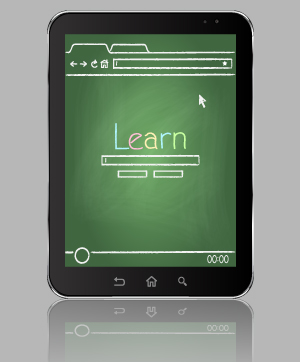Putting Education in “Educational” Apps: Lessons From the Science of Learning
Psychological Science in the Public Interest (Volume 16, Number 1)
Read the Full Text (PDF, HTML)

In the last 5 years, the use of handheld devices such as smart phones and tablets has exploded, and it should come as no surprise that the massive growth in smart technology has had a trickle-down effect, influencing even the youngest of users. Digital applications (apps) directed at children are big business; more than 72% of the top apps for sale in Apple’s App Store come from the Toddler/Preschool category.
Children interact with apps in an intuitive way, which makes apps attractive to parents and teachers as a way to help children access new information and learn new skills. Although more than 80,000 App Store apps are described as being education- or learning-based, however, there are currently no science-based standards to guide this determination. This has left parents and teachers wondering how to tell the educational apps from the “educational” apps.
In this issue of Psychological Science in the Public Interest (Volume 16, Number 1), Kathy Hirsh-Pasek, Jennifer M. Zosh, Roberta Michnick Golinkoff, James H. Gray, Michael B. Robb, and Jordy Kaufman combine data from decades of research on the science of learning — a field knitted together from psychological science, linguistics, computer science, brain imaging, neurobiology, and other areas — to describe how apps can be designed to promote learning and how they can be evaluated for educational effectiveness.
Educational vs. Entertaining
Commentary: Educational Apps: What We Do and Do Not Know
By Ellen Wartella, Northwestern University
So what makes an app educational rather than merely entertaining? The authors present four principles, or “pillars,” that lead to a more effective educational experience: active involvement, engagement, meaningfulness, and social interaction.
he Science of Learning has shown that humans learn best when they are actively involved with the material. Activity can take two forms, physical and mental. By active engagement, the authors are referring not to the physical tapping and swiping that might be part of the experience but to “minds-on” activity that requires intellectual thinking and manipulation of information. An arcade-style shooter game, for example, in which a child swipes at a screen to change the direction of a spaceship does not require active engagement or manipulation of information. In contrast, a mapping game that requires a child to swipe a screen to help solve a navigation problem requires greater cognitive activity and involvement.
In order to learn, children need to be able to stay on task, engage with the material, and be free of distractions. Placing to-be-learned information in the context of an app-based story can help children stay engaged with the material. However, if that app contains noise, movement, or side games that are unrelated to the learning goal, children will drift off task, and the learning process will be disrupted.
The Science of Learning also tells us that information is processed at a deeper level when it meaningfully relates to past knowledge or when it is personally relevant. Apps that encourage children to connect new information to their daily lives, for example, by learning about triangles by taking pictures of triangles they see in their home, will provide a more effective learning experience than an app that in which children simply pick a triangle out of a line-up of different shapes.
Finally, an app will be more educationally effective when it allows children to socially interact with others around the new material. Apps can encourage social interaction by allowing children to remotely work as a group to draw a picture or solve a puzzle, by providing in-app animated characters who respond to a child’s choices or speech, or by encouraging children to discuss the material presented in the app with parents and teachers.
Not all apps will necessarily incorporate all of these four pillars, but those that do (i.e., those that promote active, engaged, meaningful, and socially interactive experiences) are more likely to lead to significant learning. This is especially true when such apps are embedded in an educational context that, either through app design or through the child’s environment, supports scaffolded exploration, questioning, and discovery in relation to well-defined learning goals.
In the commentary accompanying this report, Ellen Wartella notes that the blueprint put forth in this report, based on the learning sciences, presents a conceptual advancement for those wishing to develop the next generation of educational apps and for parents, teachers, and researchers wishing to evaluate the educational quality of apps created for children.





Comments
I would say it depends on the app. Some apps are made for playing togther with a care taker or parent and foster communicaion. For example, i usually play with preschool explorer on my ipad . it helps me to start a conversation while playing about their preschool experiences.check it out http://www.huganddug.com/apps/preschool-explorer-toddlers/
APS regularly opens certain online articles for discussion on our website. Effective February 2021, you must be a logged-in APS member to post comments. By posting a comment, you agree to our Community Guidelines and the display of your profile information, including your name and affiliation. Any opinions, findings, conclusions, or recommendations present in article comments are those of the writers and do not necessarily reflect the views of APS or the article’s author. For more information, please see our Community Guidelines.
Please login with your APS account to comment.